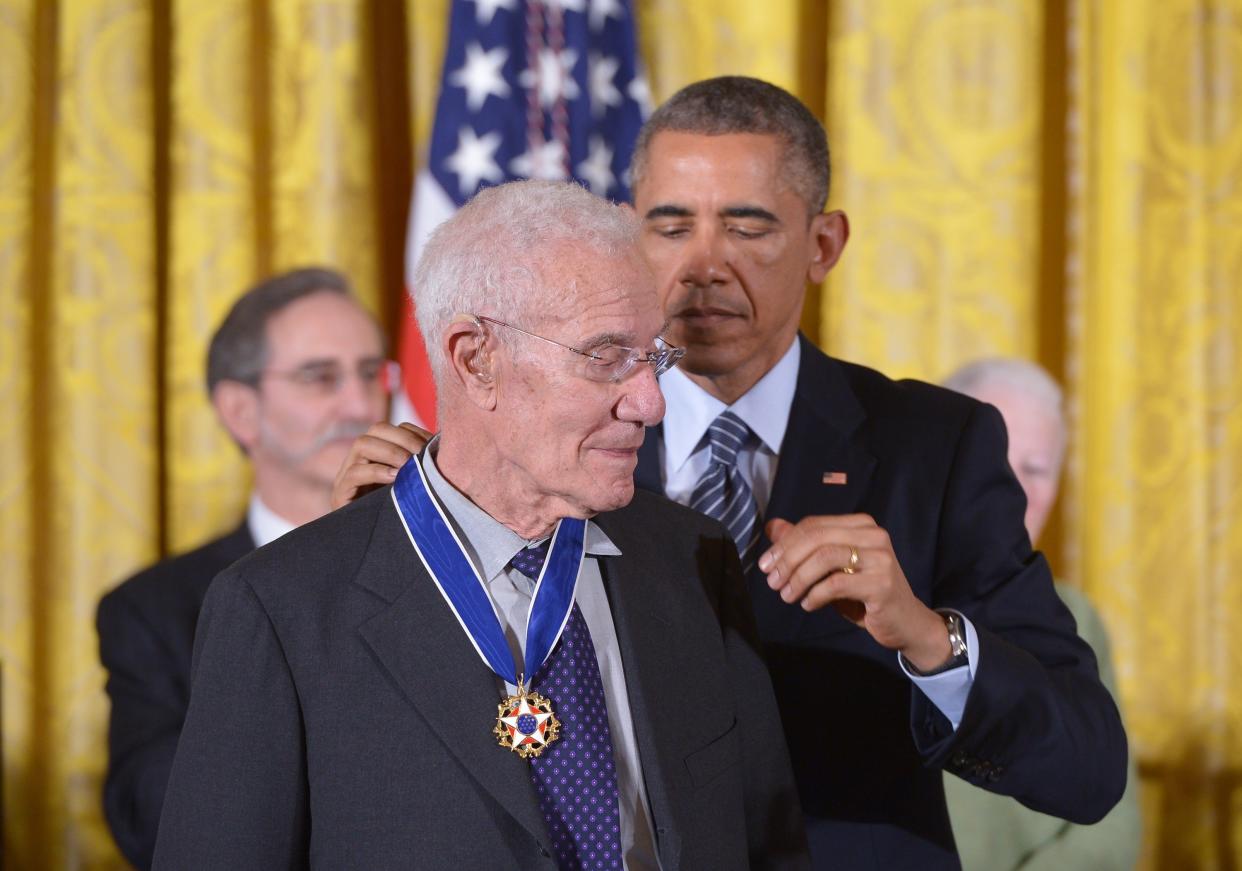Robert Solow, Nobel laureate and founder of modern economic growth model, dies at 99

Nobel laureate Robert Solow, credited as the founder of the modern model of economic growth, died on Thursday at the age of 99.
Through his writings in the 1950s, Solow challenged traditional thinking by introducing technology and productivity as major drivers of economic growth.
At the time, the prevailing economic theory (the Harrod-Domar model, an extension of Keynesian economics) argued that a growing economy only needs two ingredients: more people and more investment into the capital that people use to work.
Solow’s 1956 paper, entitled “A Contribution to the Theory of Economic Growth,” noted that capital and labor are important but proposed that a good chunk of growth could not be attributed to either of those factors.
The “residual,” Solow argued, was technological advancement and the ability of society to become more productive with the same resources. The concept introduced a whole new variable to econometric modeling, well known to most economics students as “total factor productivity.”
A year after his groundbreaking paper, Solow brought the data to back it up. In “Technical Change and the Aggregate Production Function,” Solow statistically broke down American economic growth in the first half of the 20th century, finding that factors outside of labor and capital accounted for 80% of growth.
Solow won the American Economic Association’s John Bates Clark Medal for best young economist in 1961.
And in 1987, he won the Nobel Prize.
Solow took an interest in economics during his early time at Harvard, but World War II called the Brooklyn native into three years of duty in North Africa and Europe. After returning, Solow resumed his work at Harvard and chose to focus his PhD thesis on income inequality — in part due to his wartime experiences.
“I thought the real problem our society faced was not to have wars, since I’d just been soldiering for three years, and not to have depressions, which may have been part of the cause of the war,” Solow told the MIT Technology Review in 2019.
In 1949, he joined the faculty at the Massachusetts Institute of Technology after describing Harvard’s statistics program as “eccentric.”
Solow would remain at MIT up to his death, logging more than seven decades of work at the university as a professor of economics. During his storied tenure at the university, Solow taught the likes of former Fed Vice Chair Alan Blinder and former International Monetary Fund chief economist Olivier Blanchard. Two of his students, Peter Diamond and George Akerlof, would become fellow Nobel laureates.
“I have never had or wanted any other job,” Solow said in 1987, in his Nobel Prize biography.
Solow is survived by his two sons John and Andrew, and his daughter Katherine.
Click here for the latest economic news and indicators to help inform your investing decisions.
Read the latest financial and business news from Yahoo Finance
